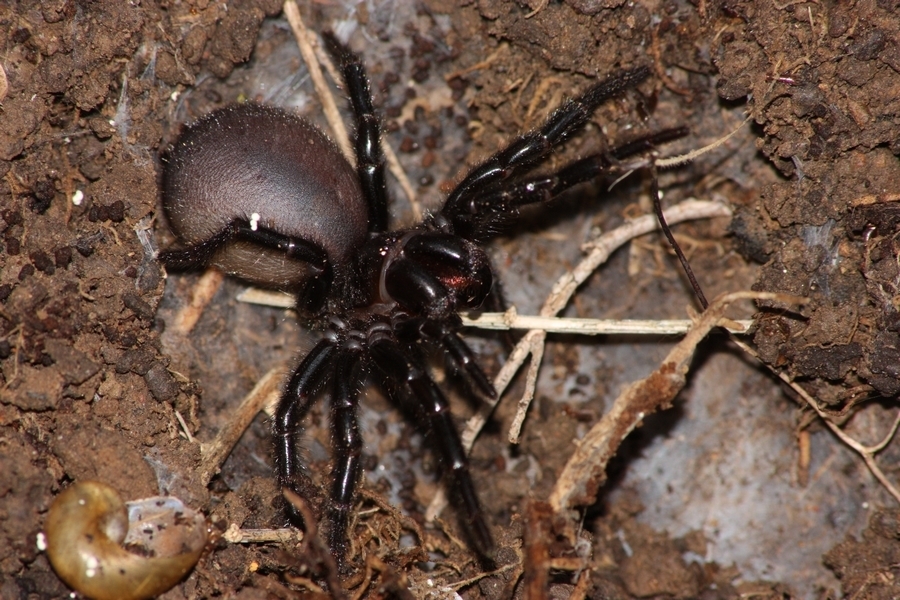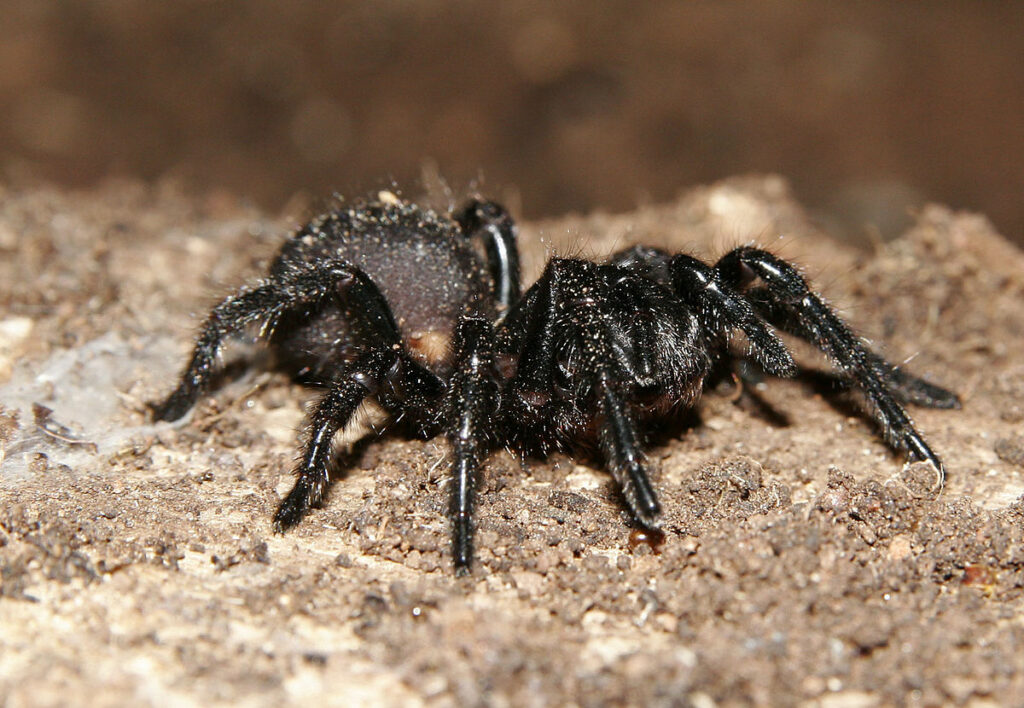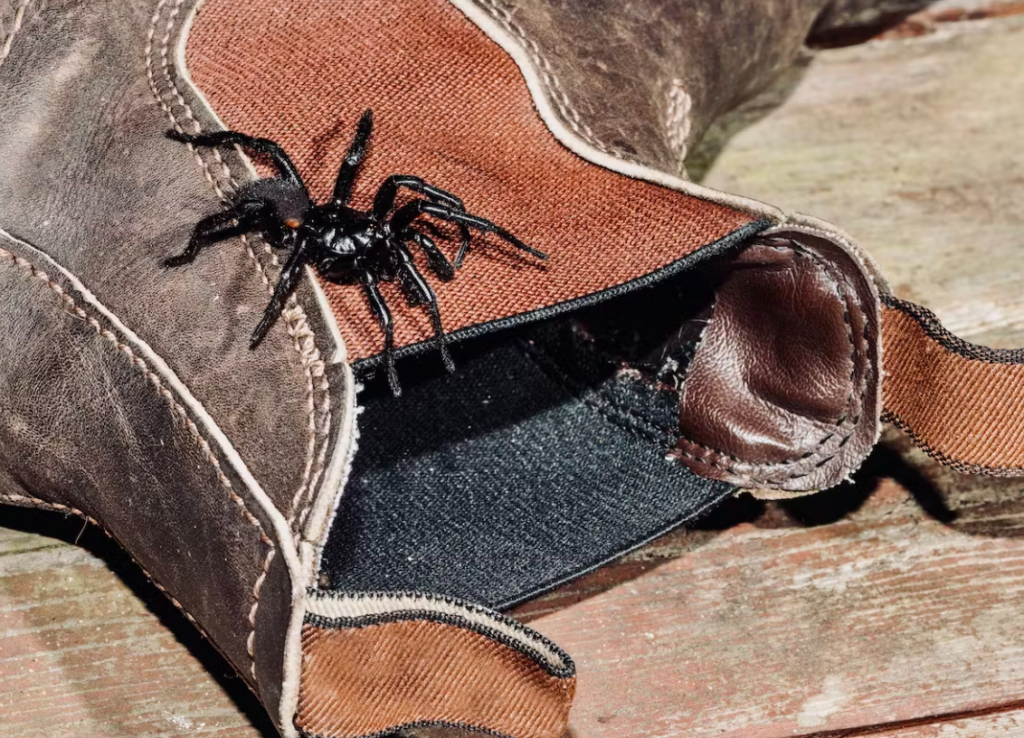Funnel web spiders are among the most notorious and venomous spiders in the world. In this in-depth article, we will explore the fascinating world of funnel web spiders, including their classification, physical characteristics, habitat, behaviour, reproduction, venom, and their impact on humans. Join us as we uncover the secrets of these formidable arachnids and shed light on the proper measures to ensure safety in their presence.
What are Funnel Web Spiders?
Funnel web spiders belong to the family of spiders known as Hexathelidae, which includes several species found predominantly in Australia. These spiders are known for their aggressive behaviour and venomous bites, making them both feared and respected by researchers and arachnid enthusiasts worldwide. Among the different species, the Sydney funnel-web spider (Atrax robustus) stands out as one of the deadliest spiders in the world.

Classification and Species of Funnel Web Spiders
The family Hexathelidae encompasses various genera and species of funnel web spiders. Some notable genera include Atrax, Hadronyche, and Illawarra. The Sydney funnel-web spider, belonging to the Atrax genus, is a prominent example of this venomous arachnid. Other significant species include the Northern tree funnel web spider (Hadronyche formidabilis) and the Blue Mountains funnel web spider (Hadronyche versuta). Understanding the different species aids in identifying their characteristics and distribution patterns.
Physical Characteristics of Funnel Web Spiders
Funnel web spiders possess distinct physical attributes that make them easily recognisable. They have robust bodies covered in dark brown or black exoskeletons, allowing them to blend seamlessly into their surroundings. These spiders have strong, agile legs designed for speed and precision. With their sharp fangs, funnel web spiders can deliver venomous bites to immobilise their prey or defend themselves when threatened.

Habitat and Behaviour of Funnel Web Spiders
Funnel web spiders thrive in a range of habitats, including moist forests, suburban gardens, and coastal regions. They are particularly fond of sheltered areas, such as burrows in soil, leaf litter, or under rocks. Funnel web spiders can also be found inhabiting the burrows of small mammals or in tree hollows. These arachnids are most active during the warmer months when their food sources are abundant.
Web Construction and Burrows
Funnel web spiders are skilled architects, constructing intricate funnel-shaped webs to capture their prey. They use strong silk to create a tubular structure with a wide entrance and a narrower retreat. The web serves as both a trap and a refuge, allowing the spider to sense vibrations caused by potential prey. Burrowing is another characteristic behaviour of some funnel web spiders, providing additional shelter and protection.
Reproduction and Life Cycle of Funnel Web Spiders
The reproductive process of funnel web spiders is complex and intriguing. Male spiders embark on a dangerous journey to find females, often encountering various hazards along the way. Once a male locates a female’s retreat, he must engage in elaborate courtship rituals to convince her to mate. After successful mating, the female produces silk egg sacs that can contain hundreds of eggs. She diligently guards the egg sac until the spiderlings hatch. The spiderlings then go through several moulting stages as they grow and develop, eventually reaching maturity. The duration of the life cycle varies among species, with some taking several years to mature.
Venomous Nature of Funnel Web Spiders
Funnel web spiders are infamous for their venomous bites. The neurotoxic venom they inject is designed to quickly incapacitate their prey, primarily small invertebrates. However, some species, such as the Sydney funnel-web spider, possess venom that can be harmful and potentially lethal to humans. Their venom contains neurotoxins that affect the nervous system, leading to severe symptoms and, if left untreated, potentially death.
Sydney Funnel-web Spider: The Deadliest of Them All
Among the various species of funnel web spiders, the Sydney funnel-web spider (Atrax robustus) holds the title of being one of the deadliest spiders in the world. Found in the Sydney region and surrounding areas, this venomous spider is responsible for numerous human deaths. Its aggressive nature, potent venom, and the ability to bite through clothing or even shoe leather make it a formidable and dangerous creature.
Funnel-web Spider Bites: Symptoms and Effects
When a person is bitten by a funnel web spider, the venom can induce a range of symptoms and effects. The severity of the symptoms depends on factors such as the species of spider, the amount of venom injected, and the individual’s sensitivity to the venom. Common symptoms include intense pain at the bite site, swelling, redness, sweating, and localised muscle twitching. Systemic effects may include nausea, vomiting, headache, abdominal pain, increased heart rate, and high blood pressure. In severe cases, the bite can lead to respiratory distress, convulsions, and even death if prompt medical attention is not sought.
First Aid and Medical Treatment for Funnel-web Spider Bites
Immediate and appropriate first aid measures are crucial in managing funnel-web spider bites. If bitten, it is essential to stay calm and seek medical attention urgently. Applying a pressure immobilisation bandage over the bite site and along the affected limb can help slow the spread of venom. Keeping the patient still and immobilised can prevent the venom from circulating rapidly through the body. Antivenom is available for the treatment of funnel-web spider bites and has proven to be effective in countering the effects of the venom. Medical professionals will assess the severity of the bite and administer the appropriate treatment, including antivenom if necessary.
Prevention and Safety Measures
Preventing encounters with funnel web spiders is crucial for reducing the risk of bites. Some preventative measures include:
- Wearing protective clothing, such as gloves and long-sleeved shirts, when working in areas where funnel web spiders may be present.
- Checking shoes, clothing, and other items before use, particularly if they have been left outdoors.
- Keeping outdoor areas tidy and minimising clutter where spiders may hide.
- Sealing cracks and crevices in buildings to prevent spider entry.
- Maintaining a clean and hygienic environment to discourage insect prey and minimise spider attraction.
- Educating children and adults about the dangers of funnel web spiders and promoting awareness of safety measures.
By implementing these precautions, individuals can reduce the likelihood of encountering funnel web spiders and minimise the risk of bites.

Funnel Web Spiders in Urban Environments
Funnel web spiders have adapted to urban environments, including suburban gardens and parks. They can often be found in moist, sheltered areas, such as leaf litter, tree stumps, or garden debris. Proper maintenance of gardens and regular inspections of outdoor spaces can help identify and mitigate potential risks associated with funnel web spiders. Seeking professional pest control assistance in infested areas can also be beneficial.
Funnel Web Spiders in Pop Culture
Funnel web spiders have made appearances in various forms of pop culture, often portrayed as dangerous and menacing creatures. Their reputation as formidable spiders has been perpetuated in movies, books, and folklore. They are frequently depicted as fearsome adversaries, emphasising their venomous bites and aggressive behaviour. However, it is important to separate fact from fiction and gain a deeper understanding of the true nature of these spiders.
Conclusion
Funnel web spiders are captivating creatures that command both fascination and caution. Their unique characteristics, venomous bites, and intriguing behaviours make them subjects of interest among researchers and enthusiasts. By understanding their classification, physical attributes, habitat, reproduction, and venom, we can appreciate the intricacies of these arachnids. Implementing preventative measures and raising awareness about funnel web spiders contribute to a safer coexistence between humans and these enigmatic creatures.
Additional Resources
References and Sources
- Gray, M. R. (2010). A guide to the identification of Sydney Funnel-web Spiders and their relatives.
- Isbister, G. K., & Gray, M. R. (2003). Funnel-web spider bite: a systematic review of recorded clinical cases.
- Davies, V. T., Vink, C. J., & Mccormack, G. (2018). Australian spiders: Identification, habitat and biology.
Sam loves to learn about animals and their habitats. He has been a nature lover from a very young age, and has been writing papers and articles about wildlife for as long as he can remember.
